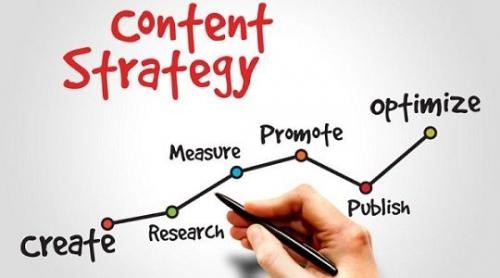User Experience for Content Marketing Success

Metrics to determine the success of content marketing are often tied to the original goals of the campaign.
For example, for each of these goals, a content marketer may measure the different engagement and conversion metrics:
Brand awareness and visibility
Businesses focused on expanding their reach to more customers will want to pay attention to the increase in the volume of visitors, as well as the quality of those interactions. Traditional measures of volume include the number of visitors to a page and number of emails collected, while time spent on page and click-through to other pages/ photos are good indicators for engagement.
- Number of visitors to a page
- Time spent on the page
- Click-through across pages/ photos
- Number of emails collected
Brand health metrics
Businesses want to measure the impact that their messages have on consumers. Brand health refers to the positive or negative feedback that a company gets. It also measures how important a brand is for consumers. With this companies want to find out if brand reputation influences their customers to make a purchase.
Measures in this part comprise
- Share of voice (SOV) is the number of times a brand has been talked versus its competitors (conversations). Outside the digital world, SOV stands for the space and frequency a brand advertisement is placed on traditional media.
- Sentiment is when the brand has positive, negative or neutral feedback.
- Brand Influence refers to the number of times a post, comment or tweet is shared on different platforms.
Diversified user base
For businesses hoping to reach not only more - but also new - types of customers online, they should pay attention to the demographics of new visitors, as evidenced by cookies that can be installed, different sources of traffic, different online behaviors, and/or different buying habits of online visitors.
- Demographics of visitors
- Sources of traffic (i.e., SEO, social media, referral, direct)
- Differences in buying patterns and user-behavior of visitors
Sales
Businesses focused on increasing sales through content marketing should look at traditional e-commerce metrics including click-through-rate from a product-page to check-out and completion rates at the check-out. Altogether, these form a conversion funnel. Moreover, to better understand customers' buying habits, they should look at other engagement metrics like time spent per page, number of product-page visits per user, and re-engagement.
- Conversion through the sales process (the process from sign-up to check-out), including click-through-rates at each stage of the conversion funnel
- Time spent on the page
- Re-engagement (i.e., % of returning visitors)
- Click-through across product pages
Innovation metrics
Refers to companies that want to analyze whether their social media campaigns are generating commentary among consumers. This helps them to come up with ways to improve their product and service. This involves "high level of brand engagement and builds brand loyalty".
Examples:
- When a company makes a post through their social media platforms and shares their ideas, consumers can be influenced or motivated to share their opinions.
- Trend spotting refers to the latest consumers' comments about a brand, product or service that must be targeted. Some tools can be provided by Google Trends, Trendsmap (Twitter) and other sites that report what is in everybody's mouths worldwide.
Digital use
Digital content marketing
Digital content marketing, which is a management process, uses digital products through different electronic channels to identify, forecast and satisfy the necessity of the customers. It must be consistently maintained to preserve or change the behavior of customers.
Way of digital content marketing
Combination of the supply chain and the users' experience
The supply chain of digital content marketing mainly consists of commercial stakeholders and end-user stakeholders which represent content providers and distributors and customers separately. In this process, distributors manage the interface between the publisher and the consumer, then distributors could identify the content that consumers need through external channels and implement marketing strategies. For instance, Library and document supply agencies as intermediaries can deliver the digital content of e-books, and e-journal articles to the users according to their search results through the electronic channels. Another example is when consumers pay for the acquisition of some MP3 downloads, search engines can be used to identify different music providers and smart agents can be used by consumers to search for multiple music provider sites. In a word, the digital content marketing process needs to be conducted at the business level and service experience level because when consumers are accessing digital content, their own experience depends on the complex network of relationships in the content marketing channels such as websites and videos. The consumers interact directly with distributors in the big supply chain through various digital products which have an important role in meeting the requirements of the consumers. The design and user experience of these channels directly decides the success of digital content marketing.
Interaction with the consumer through electronic service
Electronic services refer to interactive network services. In the electronic service, the interaction between the customer and the organizations mainly through the network technology, such as using E-mail, telephone, online chat windows for communication. Electronic services are different from traditional services and they are not affected by distance restrictions and opening hours. Digital content marketing through electronic service is usually served together with other channels to achieve marketing purposes including face-to-face, postal, and other remote services. Information companies provide different messages and documents to customers who use multiple search engines on different sites and set up access rights for business groups. These are some channels of digital content marketing
Post Your Ad Here





Comments (3)
Marketing Trends7
Digital Intelligence
This BREAKTHROUGH TECHNOLOGY has NEVER BEEN SEENIn The History Of Internet Marketing!!This tool is incredible and offers REAL value for one purpose- helping you make sales - in ANY PROGRAM!.
Awesome POWER Duplic...10
VIRTUAL Employment INDUSTRY
Digital content marketing, , uses digital products through different electronic channels. It must be consistently focused on the behavior of customers.
Digital content marketing focused on - the supply chain and the users' experience.
The supply chain of digital content marketing mainly consists of commercial, end-user content providers and distributors also customers. In this process, distributors manage the interface between the publisher and the consumer. the distributors can identify t
Income MARKETING Opp...11
EZWORKSYSTEMS
User Experience for Content Marketing Success!
Why do digital content marketing?
for Content Marketing Success!
Digital content marketing through electronic service - together with other channels.
to achieve marketing Success, including face-to-face, ,
with other services.
Information companies provide different messages-use multiple search engines on different sites. and set up access to business groups.
Network of relationships in the content marketing channels such as websites and vide